Creative Capital: Transforming Content into Currency
published By Parth Chhaparwal , January 11, 2024

Creators have become central to online media and entertainment 200M+ content creators and brands spending USD 30B+ on creator marketing globally.
Creators confront three significant challenges: producing content efficiently and generating sustainable income.
In this article, we will focus on these three critical aspects: creation, distribution, and monetization. We also highlight the growing need for specialized third-party tools in each area.
In our exploration, we observe that distribution is well-managed by giants such as Meta’s suite of platforms, Twitter and LinkedIn. However, there are clear gaps in original content production and novel monetization strategies. Newsletters, in this context, emerge as a powerful solution. They address both distribution and monetization, proving invaluable to creators.
We also touch upon other essential tools in delivery and community management. Though not primary distribution channels, they play a vital role in increasing the value provided by other full-stack solutions, proving indispensable to creators in the grand scheme.
As we unpack these dynamics, we aim to spotlight the untapped potential for content creators looking to thrive in today’s digital renaissance.
As creators evolve, they embrace a multitude of roles
With the profession of a full-time creator becoming a sustainable income avenue, the workflow of a creator has become complex, with critical decisions taken that affect the output generated. These decisions can be divided into the following processes:
- Creating engaging content: Content is the primary product of a creator. Building the right content is the most important task a creator pursues that eventually affects the output performance. The key parameters that a creator has to consider while creating content include
- Mode of content – text (short/long), images, audio, video (short-form/ long-form)
- Core content of the output
- Professional editing of the content
- Delivering content and building an audience: After content is created, the next step is posting the output and attracting an audience. The key parameters to consider in this step include
- Platform of core audience – Meta, LinkedIn, Twitter, YouTube, Twitch, TikTok, etc.
- Time of delivery – when is the core target of a post most active
- Mode of delivery – email, newsletter, post, tweet
- Monetizing on output performance: Capitalizing on the buzz created by the post helps a creator build a steady source of income. Parameters to consider while making monetization decisions include
- Medium of monetization – commerce, donations, premium content, courses, NFTs, community access
- Modes of payment – payment gateways, cryptocurrencies and NFTs, etc.
- Output feedback and analytics: After an output content has served its purpose, it is important to analyze the performance and extract learnings for future posts. Parameters to consider while analyzing feedback from the audience include
- Key metrics to be traced
- Visualization of feedback data
- Specific insights to be derived
Creators are adapting tools tailored to meet their diverse needs
Let’s look at the types of tools used across the four steps in the value chain.
Content Creation
Text and video are the two most popular kinds of content on the internet. There are different tools used to create both of these forms of content.
Textual Content
Types of tools used to create textual content
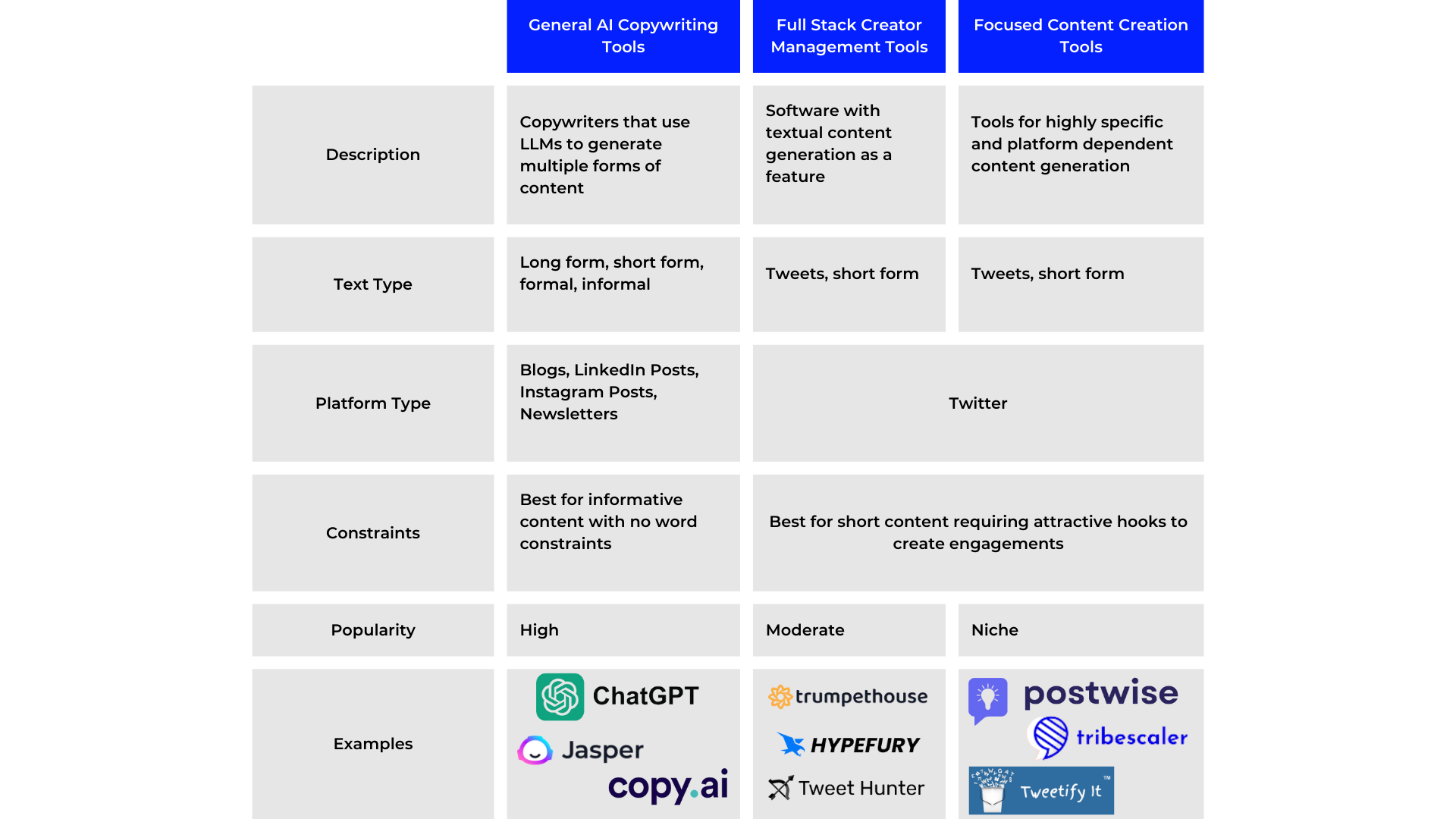
Key insights
- ChatGPT and corresponding derivatives like Jasper and Copy.ai enjoy the most popularity with informative and casual content such as LinkedIn posts, blogs, and articles, Instagram captions, etc.
- Twitter is the platform where specialized content is required. Given the constrained nature, making differentiated content is difficult but essential.
- Specialized tools are mostly unfunded. The reason for this has to be confirmed using the creator survey. Our hypothesis is that the payment propensity for text-based short-form content is not significant.
Video Content
Types of tools used to create video content
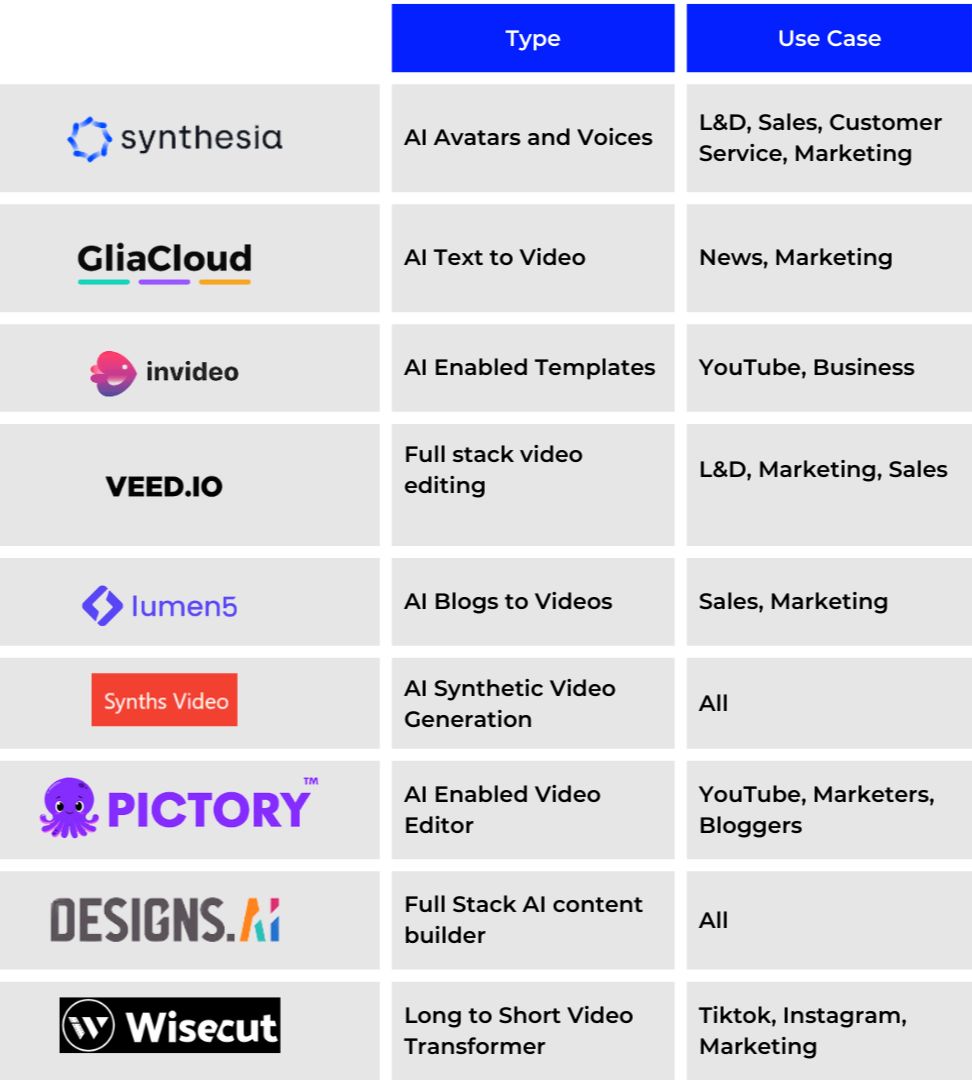
Key Insights
- Highly advanced tools like RunwayML are a bit complicated for creators to use, given that the organization is research-focused. The high-quality output provided by Runway provides an opportunity to build a tool for creators that implement it.
- The AI for video development space provides significant value to various industries, and hence, there are several heavily funded players in this domain.
- Invideo and Pictory are the ones that specialize in YouTube video generation, which is primarily in the long form. Wisecut is useful for creating short-form videos. There is no one-size-fits-all solution in the market today.
Content Delivery and Community Management
Types of companies providing social media management to creators
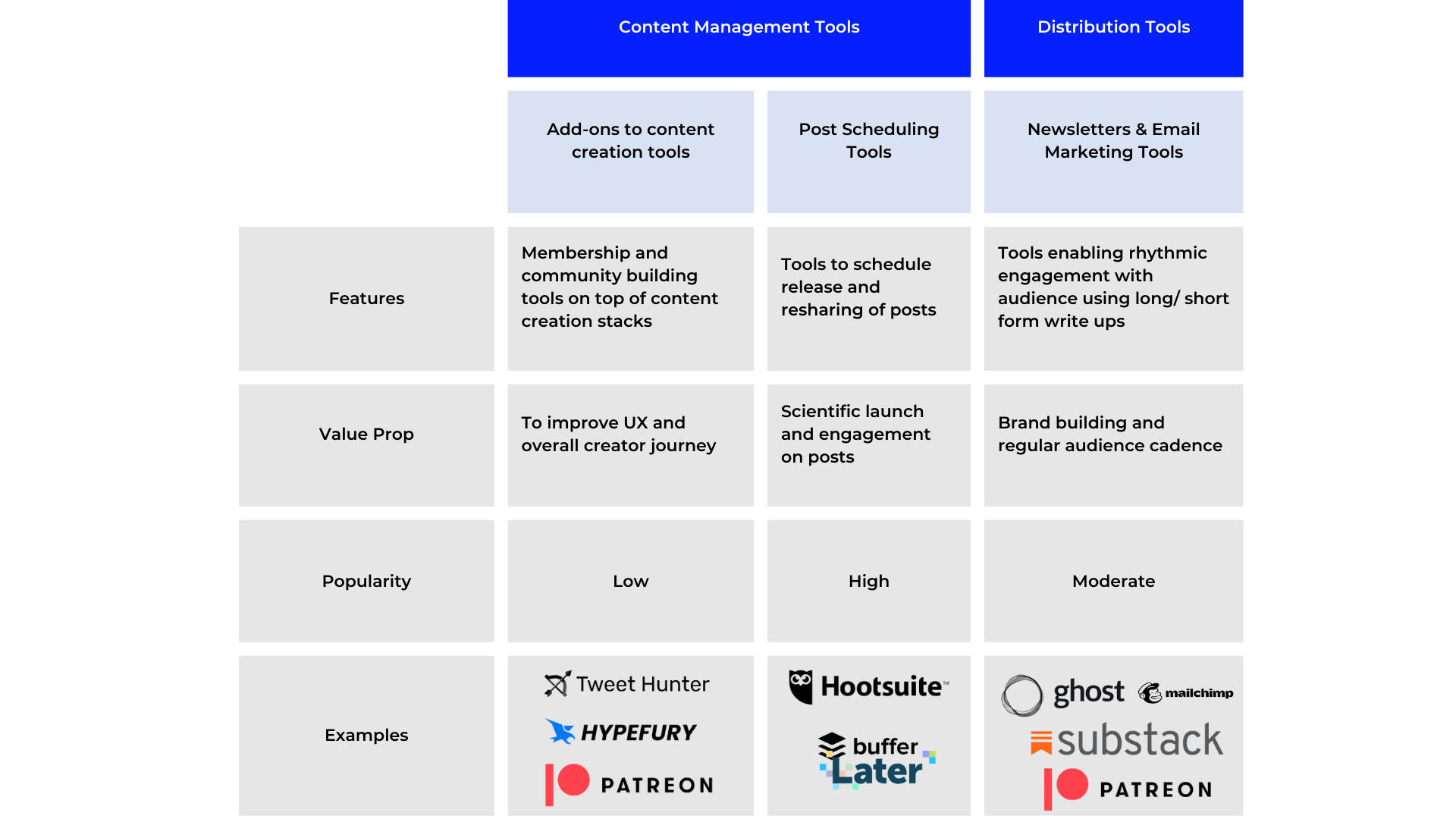
Types of tools used for blogging, email marketing and newsletters
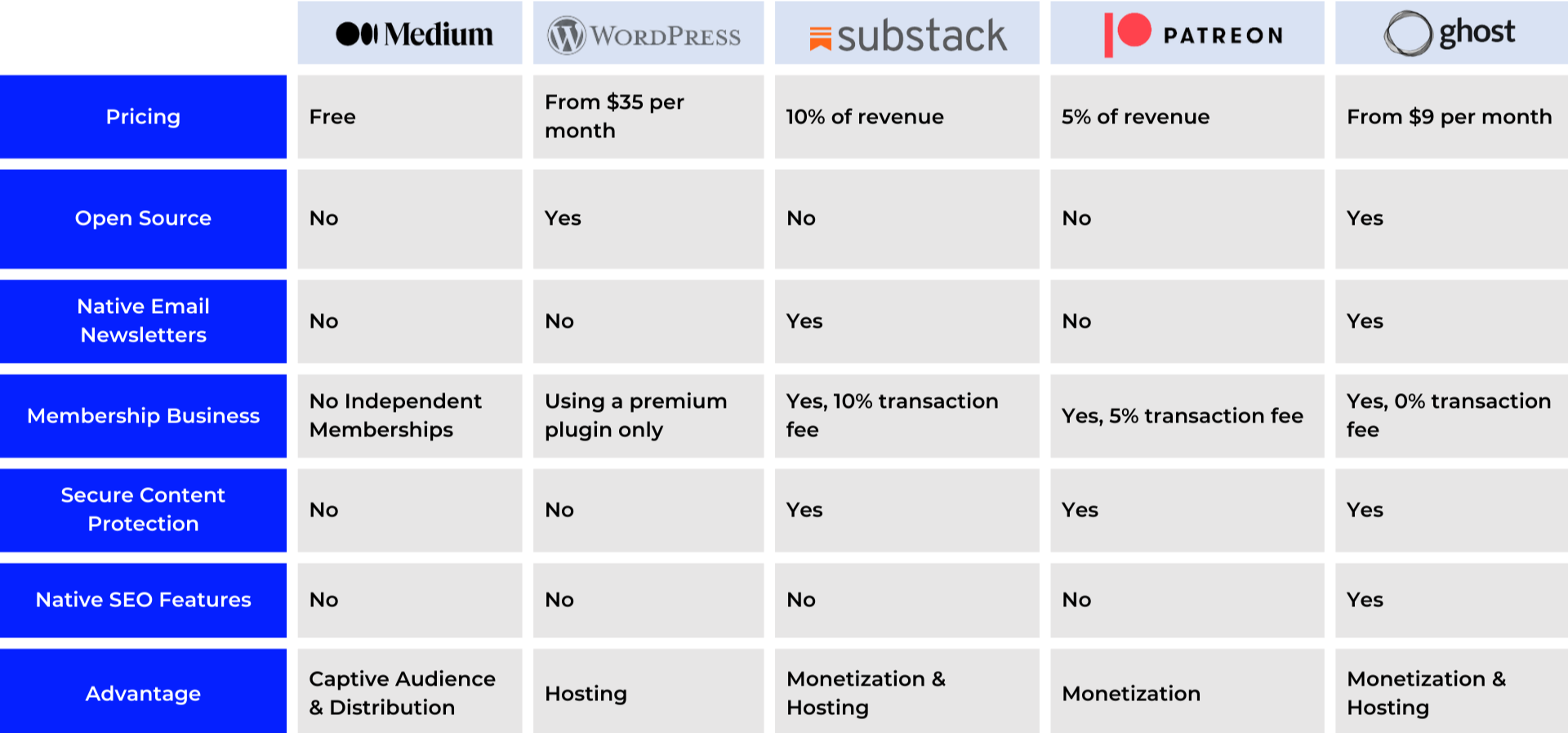
Key Insights
- Scheduling tools are a critical part of the tool stack of creators since the timing of a post and reshare is a sensitive parameter. There are funded companies created just on scheduling as a use case.
- Membership and community management acts as a natural extension and ACV expander for content creation tools or monetization tools. The standalone value extracted may not be significant.
- Newsletters and blogs have become a pivotal mode of communication between a creator/brand and its audience. There are several tools to choose from to create the right one-to-many interaction page.
- Key purpose of newsletters is to distribute premium content to high-intent content creators and followers and enable monetization on a captive audience.
Monetization
Tools used for monetization and monetary management
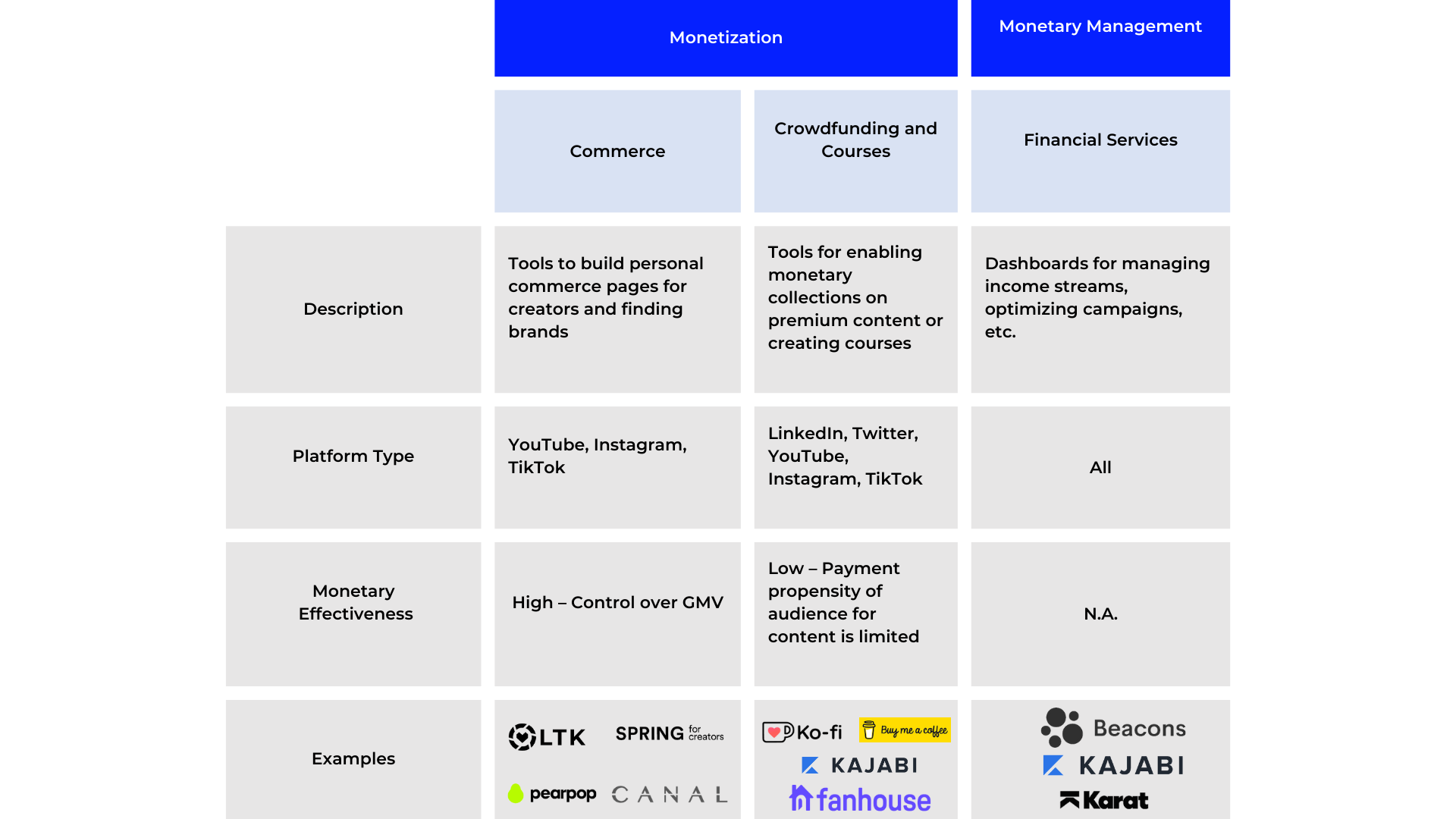
Key Insights
- Creator commerce platforms have been successful in attracting and serving a large number of creators. Creators have control over the GMV and the products they promote.
- Other modes of payment have been ineffective in creating a steady source of income. Audiences would prefer paying for products and merchandise over crowdfunding and courses.
- Finance management tools for creators are gaining significant popularity, and startups in this space have recently raised early-stage funding.
Feedback and Analytics
Most Creator CRM, Audience Management, and Analytics tools are extensions of the other three categories. These tools act as features that extend ACVs.
Opportunity for startups to build content production & monetization tools
In conclusion, while the creator economy is burgeoning, it’s clear that the most significant opportunities for growth and innovation lie in the realms of content production and monetization.
Tools that enable creators to craft and distribute original, engaging content at a faster pace, as well as those that open up new revenue streams, are poised to define the future of this industry. Newsletters have emerged as a potent force, adept at addressing both distribution and monetization challenges, and are a testament to the potential of specialized tools in this space.
Other tools that focus on delivery and community management may not be primary channels, but they are crucial in enhancing the value of comprehensive creator platforms.
The path forward for creators is one of leveraging these tools to not only meet their fundamental needs but also to expand their creative and financial horizons in the ever-evolving digital ecosystem.
If you’re an entrepreneur building creator tools for content monetization and production, we’d love to hear from you. Reach out to Parth.



